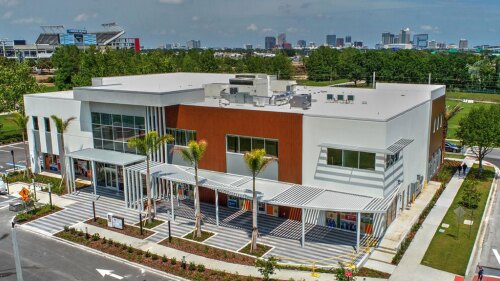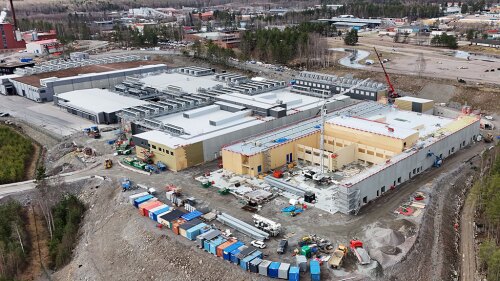The only thing we can be certain of regarding the transition to battery electric vehicles (BEVs) is that, although that transition is inevitable, we have no reliable way of predicting how it will unfold. From politics and incentives to a Moore’s Law–like evolution in battery efficiency and charging speed, to fire safety improvements being designed into these vehicles, disruption remains the one constant. What does this likelihood mean for the intelligent future-proofer? Common sense. Reasonably, we can anticipate that plug-in hybrid electric vehicles, even while they serve as a transitional solution, may have their role diminish over time.
In contrast, BEVs will go farther and charge faster at the DC Fast Level, but the demand to plug in while parked is sure to persist for many years to come. The percentage of parking spaces that need to be dedicated and the corresponding charging speed (Level 1, Level 2, DC Fast) is not fully known today and is likely to increase over time. Worse still, politicians love misguided mandates, local fire commissioners have their own opinions, and headlines on this topic are frequently misleading. High-level takeaway: Take a market-based approach and ensure that flexibility is built in for the future.
Circulation and layout
The emergence of autonomous vehicles (AVs) is rapidly transforming what was once science fiction into an impending reality. Although the precise timeline for widespread AV adoption remains uncertain, the vehicles’ impact on parking design will be as profound as it will be subtle. What we can reasonably predict is that we will neither transition to a world where all vehicles are self-driving taxis, nor will we end up in an environment where our vehicles take us to our destination, return home, and then pick us up when we are ready to leave.
Thus, this evolution necessitates a fundamental rethinking of how parking facilities are conceived and operated. Once again, future-proofing requires us to look beyond the headlines and think practically about how we can adapt to new technology. The impact of AVs on urban landscapes will occur inside the parking garage, where drop-off zones will allow passengers to disembark on the entry level before the car departs and parks itself, waiting nearby to be summoned for the return trip.
VIPs will pay extra to have their vehicle stored by the main entrance, ready at a moment’s notice to take them to their next destination. At the same time, the economically minded will send their cars to the nether reaches of the parking garage and will have to remember to summon them a few minutes in advance of their departure. As with overstay fees at EV chargers, parking operators will start charging for dwell times in pickup and drop-off zones.
Unlike a human driver, an AV navigates and interacts with its environment through sophisticated sensors and algorithms, demanding a different set of design considerations. They include creating AV–friendly lanes and entry/exit points, where pathways are clearly defined, are potentially wider, and allow more gentle turning radii to facilitate seamless, automated access. Crucially, traditional human-readable signage and visual cues will be supplanted by the need for machine-readable markers and robust digital communication protocols, alongside supporting infrastructure, ensuring that AVs can reliably interpret their surroundings and execute maneuvers.
Beyond accommodating AVs themselves, future-proof parking facilities must also integrate designated zones for new mobility solutions. The rise of transit network companies such as Uber and Lyft has already demonstrated the need for dedicated pickup and drop-off areas, which means moving these activities from busy curbsides into more organized spaces.
Looking ahead, the mobility landscape is expected to diversify even further by incorporating shared autonomous vehicles, last-mile delivery bots, and micro-mobility options such as e-scooters and bicycles. A forward-thinking design will strategically reserve flexible areas within the parking facility to accommodate these evolving needs, transforming garages into dynamic mobility hubs that serve a broad spectrum of transportation demands.
The evolution of wayfinding
Just as parking facility layouts must evolve to accommodate autonomous vehicles, so, too, must the systems that guide users through these complex environments. For decades, wayfinding in a parking garage was a static, and often confusing, affair of painted arrows and cryptic signage, open entirely to human interpretation. Today, technology has profoundly transformed the user experience and moved beyond mere static directions to offer dynamic, real-time guidance for both human-driven and self-driving vehicles.
Although traditional signage remains a necessary component for redundancy and basic navigation, especially for human drivers, the game has undergone a fundamental change with the advent of digital systems. Digital signage, strategically placed throughout a facility, can provide real-time information on parking availability and pricing, and can even direct drivers to specific open spaces. This real-time capability is crucial for maximizing efficiency and reducing congestion. Furthermore, advanced parking guidance systems, using networks of sensors or cameras, can monitor every space in a facility to provide a level of granular detail that was previously unimaginable.
Such rich data can then be seamlessly fed to mobile applications, in-dash navigation systems, and—crucially—directly to autonomous vehicles. This sort of feed allows users—whether human or AI—to plan their entire parking journey even before they arrive, and to navigate the facility with unparalleled precision. The result is a significantly more efficient and less stressful experience for the user, coupled with a more optimized, profitable operation for the owner, as spaces are used more effectively and traffic flow is streamlined.










